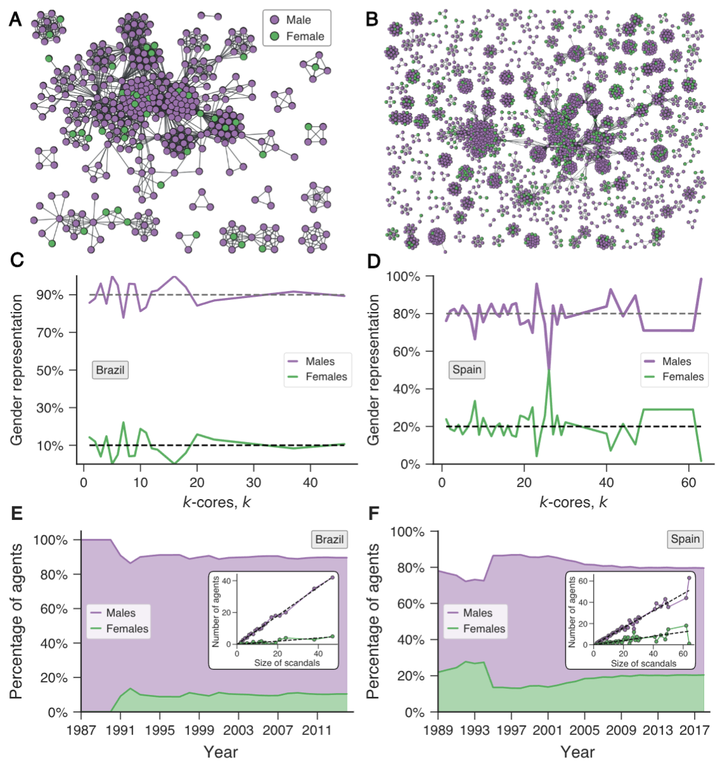
Abstract
Criminal activities are predominantly due to males, with females exhibiting a significantly lower involvement, especially in serious offenses. This pattern extends to organized crime, where females are often perceived as less tolerant to illegal practices. However, the roles of males and females within corruption networks are less understood. Here, we analyze data from political scandals in Brazil and Spain to shed light on gender differences in corruption networks. Our findings reveal that females constitute 10% and 20% of all agents in the Brazilian and Spanish corruption networks, respectively, with these proportions remaining stable over time and across different scandal sizes. Despite this disparity in representation, centrality measures are comparable between genders, except among highly central individuals, for which males are further overrepresented. Additionally, gender has no significant impact on network resilience, whether through random dismantling or targeted attacks on the largest component. Males are more likely to be involved in multiple scandals than females, and scandals predominantly involving females are rare, though these differences are explained by a null network model in which gender is randomly assigned while maintaining gender proportions. Our results further reveal that the underrepresentation of females partially explains gender homophily in network associations, although in the Spanish network, male-to-male connections exceed expectations derived from a null model.